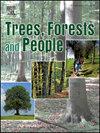北卡罗来纳州继承人财产的财产估算、土地所有者观点和木材估价
IF 2.7
Q1 FORESTRY
引用次数: 0
摘要
尽管整个南部地区都在努力预防、教育和补救继承人的财产所有权,但继承人的财产所有权及其相关挑战仍然是一个长期存在的问题。它仍然是土地流失和林地继续破碎化的机制。虽然美国已做出许多努力来建立一个衡量标准,以评估继承人财产的规模和范围,但很少或没有已知的努力来准确评估继承人财产在木材、水质、野生动物、生物多样性方面的价值,以及其在确定社区特征和许多其他益处方面的作用。本文从北卡罗来纳州被归类为继承人财产的锁定木材价值入手,对这些资源进行了一些考量。对继承人财产的大多数研究都是从社会公正的角度探讨问题,而本文则探讨了对重要的林业产业的经济影响。很少有人对继承人财产所有者群体进行研究,探讨他们的观点以及与这种特别脆弱的土地所有权形式相关的挑战。本文还将简要介绍近期对继承人财产所有者的调查研究。本文将北卡罗来纳州作为第一个案例进行研究,可借鉴、改进和完善该案例,并将其应用于其他州,以更好地了解以继承人财产形式持有的土地的价值和/或失去的机会。本文章由计算机程序翻译,如有差异,请以英文原文为准。
Property estimation, landowner perspectives and timber valuation of heirs property in North Carolina
Heirs’ property ownership and its associated challenges continues to be a persistent problem despite efforts to prevent, educate and remediate heirs’ property ownership throughout the south. It continues to be a mechanism for land loss and continue fragmentation of forested land. While there have been many efforts to create a metrics to assess the size, and scope of heirs’ property in the United States, there have been few or no known efforts to make an accurate assessment of the value of heir's property for timber, water quality, wildlife, biodiversity, and its role in defining community character and a host of other benefits. This paper provides a starting point with some consideration of these resources beginning with locked up timber value in North Carolina classified as heirs’ property. While most study of heir's property explores issues from a social justice standpoint, this paper explores the economic impact to an essential forest industry. Few studies have been done on the cohort of heir's property owners to examine their perspectives and challenges associated with this particularly vulnerable form of land ownership. This paper will also give a brief examination of recent survey research of heir's property owners. This paper examines North Carolina as a first case study that can be learned from, improved on and refined to apply to other states to better understand the values and/or lost opportunities from land being held in heirs’ property status.
求助全文
通过发布文献求助,成功后即可免费获取论文全文。
去求助
来源期刊

Trees, Forests and People
Economics, Econometrics and Finance-Economics, Econometrics and Finance (miscellaneous)
CiteScore
4.30
自引率
7.40%
发文量
172
审稿时长
56 days
 求助内容:
求助内容: 应助结果提醒方式:
应助结果提醒方式:


